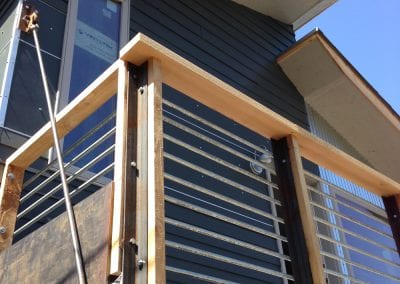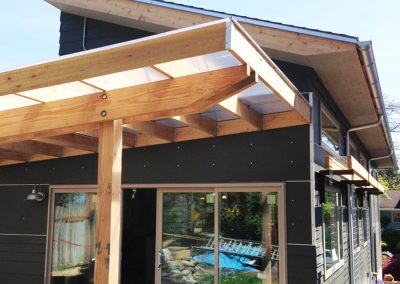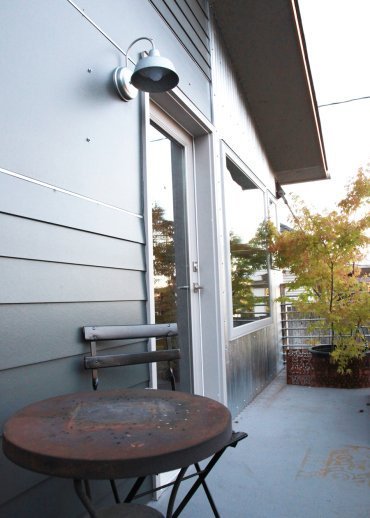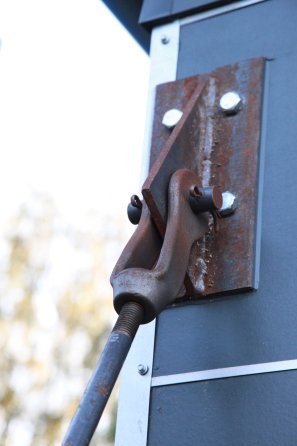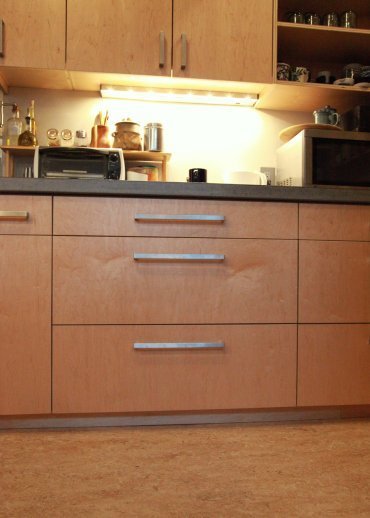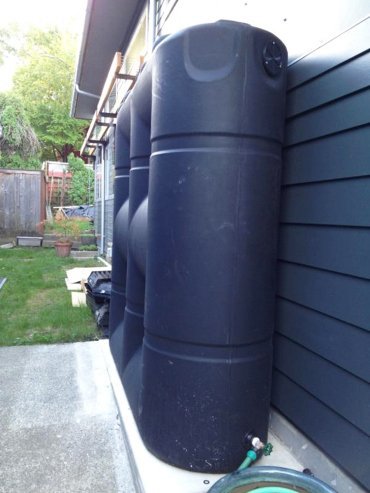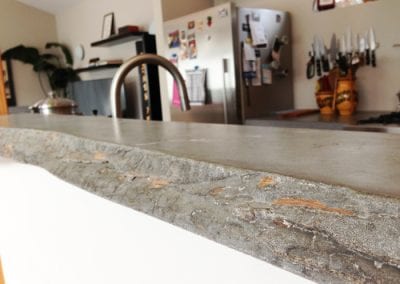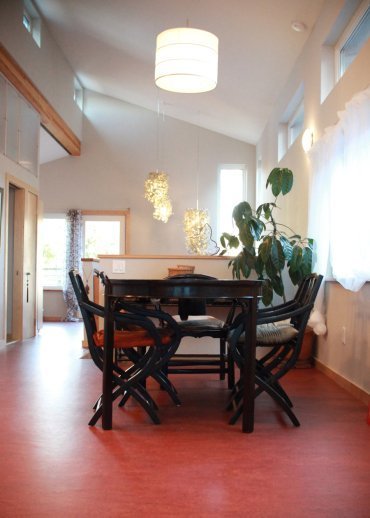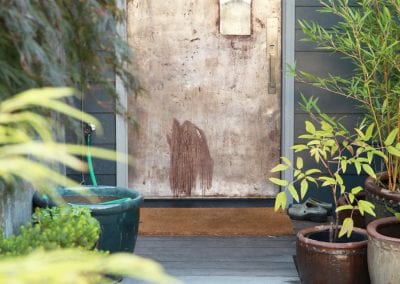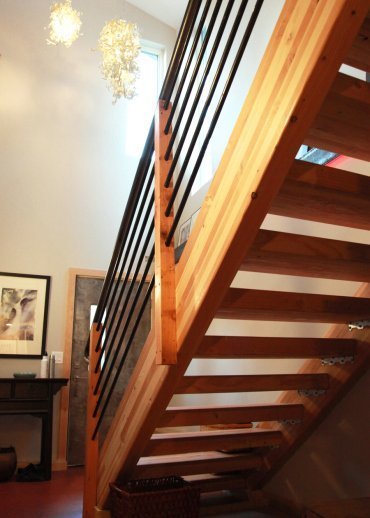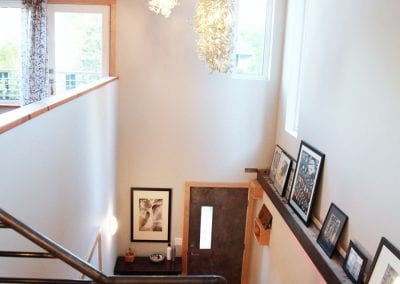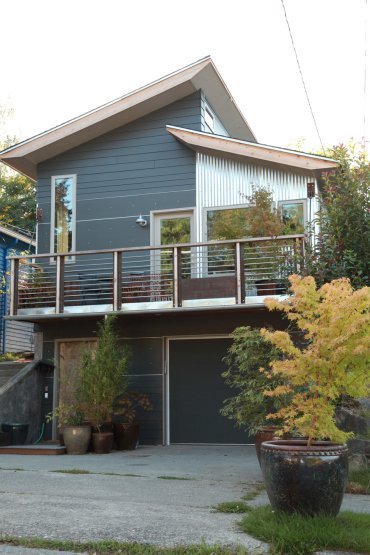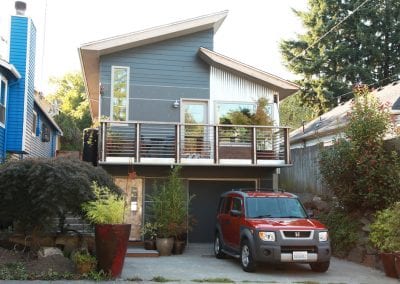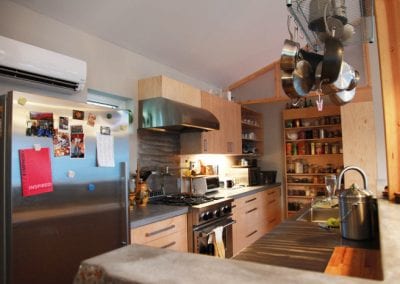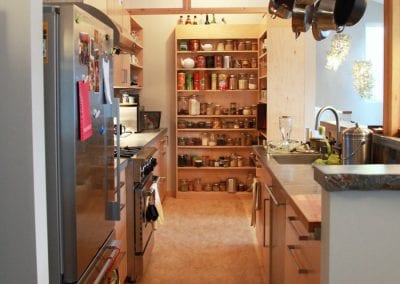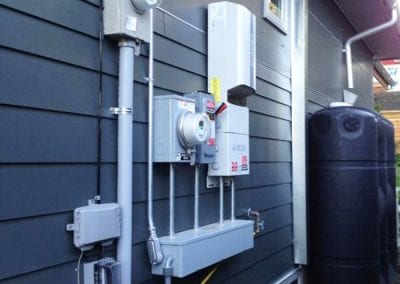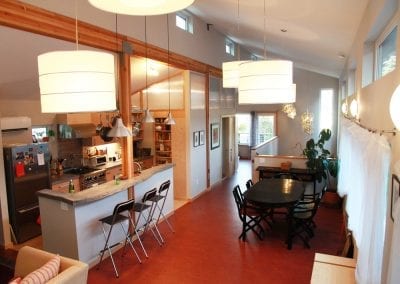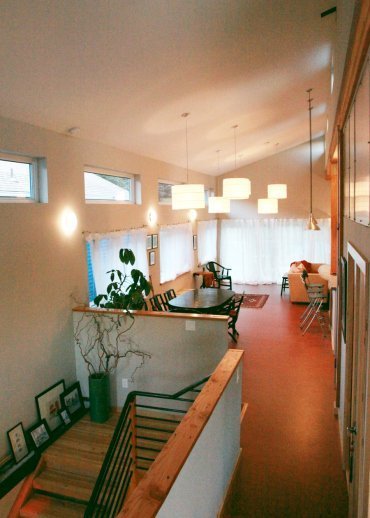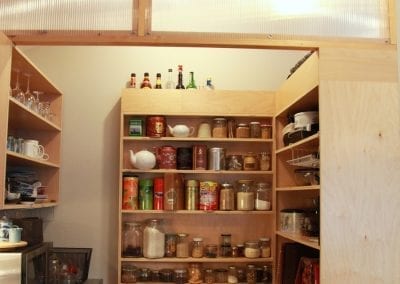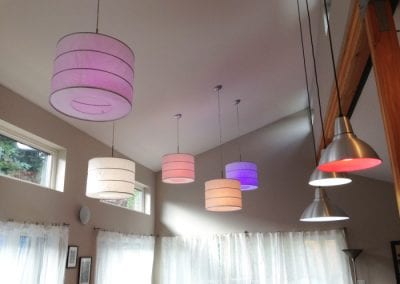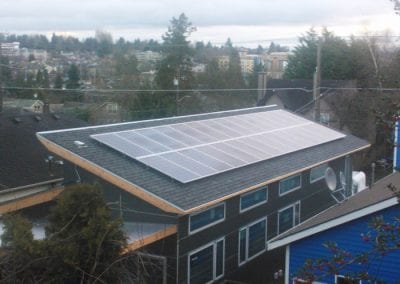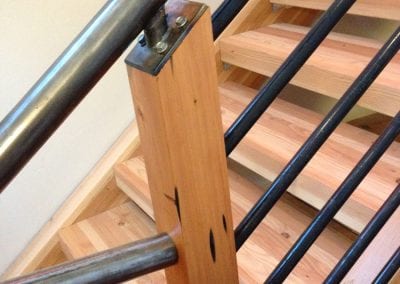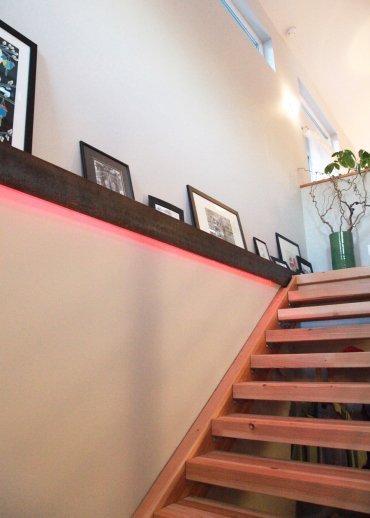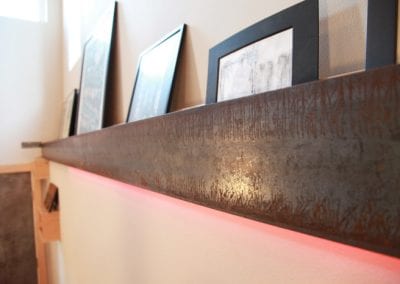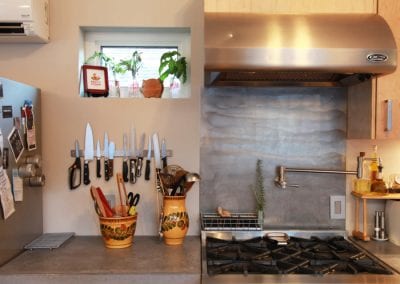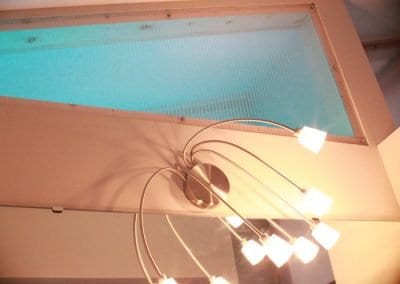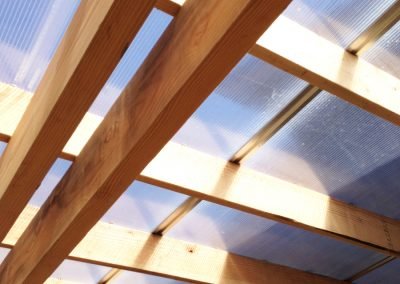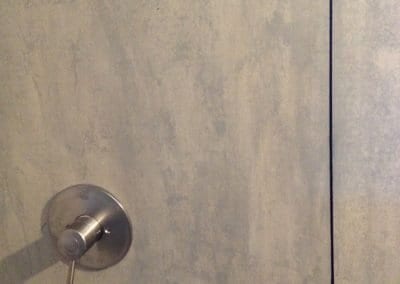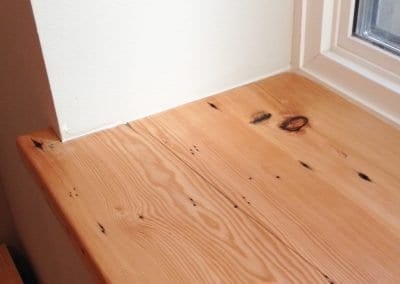This net-zero-energy house remodel in Green Lake is designed to be budget-conscious, energy-efficient, and surrounded by lush gardens. It is a great example of an affordable deep-green remodel. Collaboration between owner, architect, and builder has created a beautiful synthesis of resource efficiency, connection to nature, and renewable energy — mixed together with a funky modern/industrial aesthetic.
The inspiration
The Northwest Green Home Tour inspired the owner Becky to learn all she could about green building. She joined the NW Eco Building Guild and attended green workshops. She was particularly inspired by a net-zero energy home in Ballard. Wanting to “do it all” — renewable energy, rainwater harvesting, salvaged materials, and much more — she dove in and spoke with many green professionals in the Guild.
Team approach
1. The owner
Becky started with a desire to go “super green” while being cost-effective, and she had lots of great design ideas. After finding a well-located home with good solar orientation and a solid structure (although in need of an aesthetic update), she pulled together the project team of LD Arch Design and TC Legend Homes, as described on her blog about the project.
The design goals
The existing home was in serious need of aesthetic and energy updates, with an interior so carved up it felt like every room was small and dark. The goals for the remodeled home were:
- Create a high-efficiency, net-zero-energy house
- Raise the roof to provide a good spot for solar and let light in
- Connect to the garden and integrate rainwater harvesting
- Use some of the unfinished basement/garage space for bedrooms
- Have an open floor plan at the upper level that would be good for entertaining
- Create a more modern and industrial aesthetic
- Demonstrate that high-quality green design can be affordable
Green choices
1. Less energy
- Renewable energy: Budgeting to include solar panels was a priority.
- 6.72kW solar module sized to meet and exceed energy usage
- Plan for future electric car charging station
- An energy-efficient building envelope: The envelope performs well above energy code.
- 6” SIPS panel walls and 9.5” SIPS panel roof
- 4” rigid insulation installed over existing concrete slab
- Triple-pane high-quality vinyl windows
- Energy-efficient equipment and lighting: The mechanical systems, appliances, and lighting are selected to be highly efficient.
- Mini-split ductless heat pump
- Heat pump water heater
- EnergyStar bath fans, refrigerator, and dishwasher
- High-efficiency horizontal axis washing machine
- LED light bulbs
- Air sealing: Heat loss through air leaks can be virtually eliminated with modern building technologies.
- SIPS panels provide a sealed wall system
- Careful air sealing at openings and penetrations
- Whole-house ventilation system to ensure adequate fresh air
2. Less new stuff
- Reuse and deconstruction: Materials are treated carefully rather than being sent to a landfill.
- Much of the home’s structure is reused
- Existing materials deconstructed and used elsewhere in the house
- A new use found for almost everything removed from the house
- Construction waste reduced by precise materials ordering
- Reclaimed and recycled content materials: Becky combed salvage shops for materials that fit the desired aesthetic.
- Salvaged stainless steel counter and sink in kitchen
- Light fixtures made with salvaged material
- Salvaged wood trim
- Recycled content fiber cement board siding and gypsum wall board
3. Less toxic stuff
- Nontoxic materials: A priority is placed on selecting materials that do not outgas toxic fumes.
- Wood products with no added urea formaldehyde
- Nontoxic caulks and adhesives
- No-VOC paints and finishes
- Marmoleum natural linoleum flooring
- Hard-surface flooring: A carpet-free home reduces dust and allergens. The home is a “shoes-off” home to avoid tracking in pollution.
- Healthy ventilation design: This is particularly important in a house with an airtight envelope.
- High clerestory windows open to draw fresh air up and through the home
- HVAC system with HEPA filter includes a fresh air supply
4. Less water
- Efficient plumbing fixtures
- Dual flush toilet with integral hand washing sink
- Efficient horizontal axis washing machine
- Low-flow shower and faucet aerators
- Water efficient site design
- Rain cisterns and barrels to capture and store water for landscape watering
- Native and drought-tolerant landscaping
- Master Composter in residence
- Design to celebrate the flow of water in our rain-rich environment
Photos by Holli with an i Photography unless noted otherwise.
